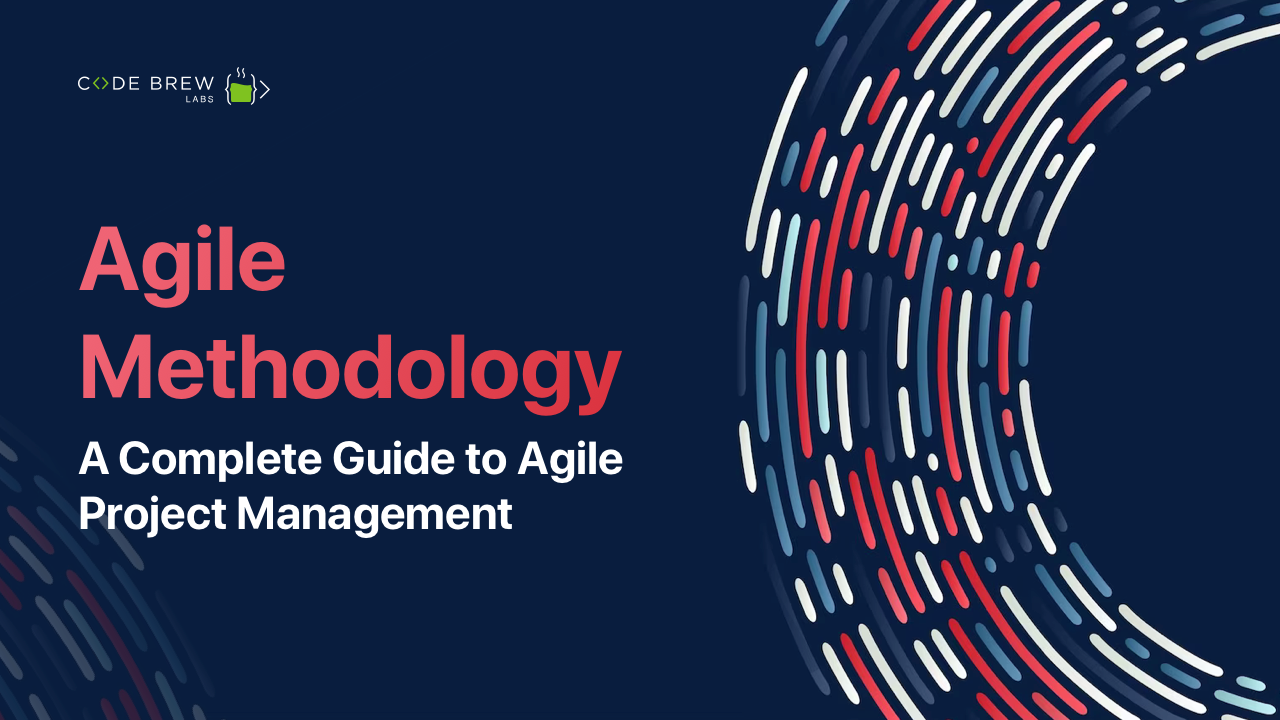
Picture this!
Table of Contents
A world where projects no longer give in to rigid plans and stifling bureaucracy. Instead, they dance to the rhythm of change, embracing innovation and fostering collaboration. Welcome to the realm of Agile Methodology, a revolutionary approach that empowers teams to navigate the unpredictable currents of modern business with efficiency.
This step-by-step guide will be your compass in this exciting voyage of agility, unraveling the secrets of Agile and illuminating the path to project success.
In an era where adaptation is key and customer demands can shift in a heartbeat, Agile methodology emerges as a tool of flexibility and responsiveness. It’s a transformative mindset that champions iterative development, encourages constant feedback, and prioritizes delivering value early and often. With Agile, projects become living entities, breathing and evolving alongside the needs and aspirations of the stakeholders.
Together, we’ll explore the core principles of Agile, like making a good plan, working in short bursts, and learning from what we’ve done. Say goodbye to the old ways of managing projects and get ready to unleash the power of Agile with Code Brew.
Let’s dive in and start your Agile journey!
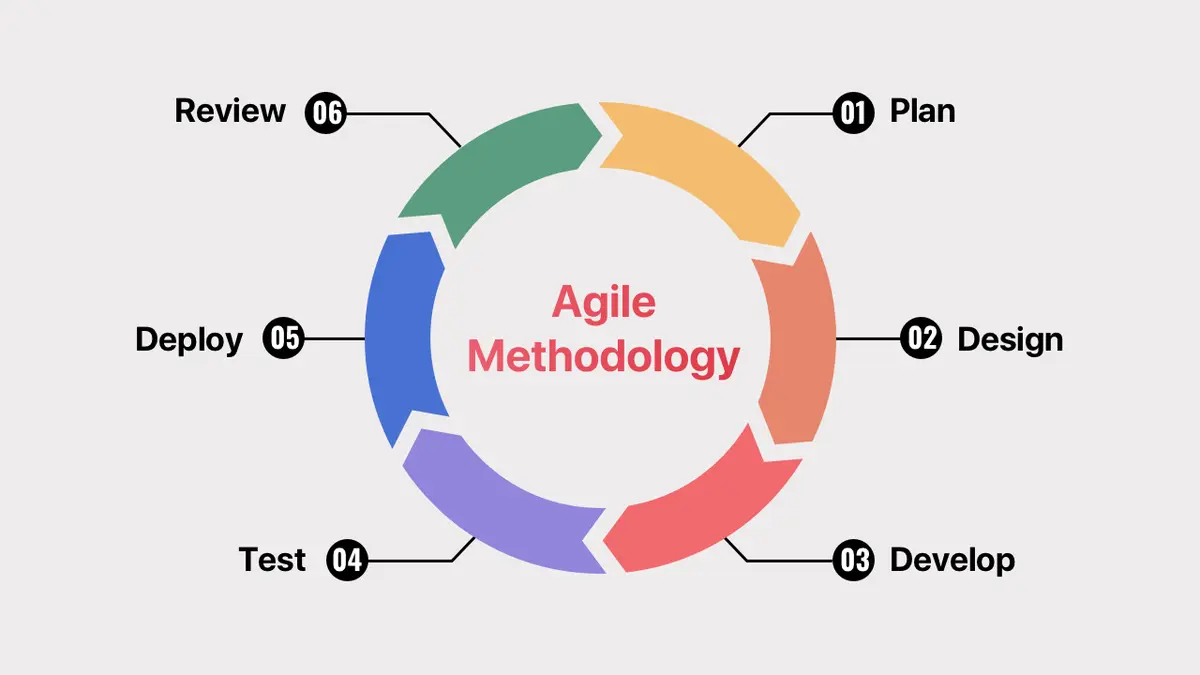
The agile development methodology is a way of managing software development projects that focuses on delivering value to customers in short and frequent iterations. It emphasizes flexibility, collaboration, and continuous improvement throughout the development process.
Though initially this unique methodology was introduced for software development back in 2000, it has since been adopted in various other fields as well.
An iterative framework at its core, the agile methodology breaks down a project into multiple phases, known as sprints. So, after each sprint, teams look back and access the situation to see if they could make their strategy a bit more efficient in the next sprints.
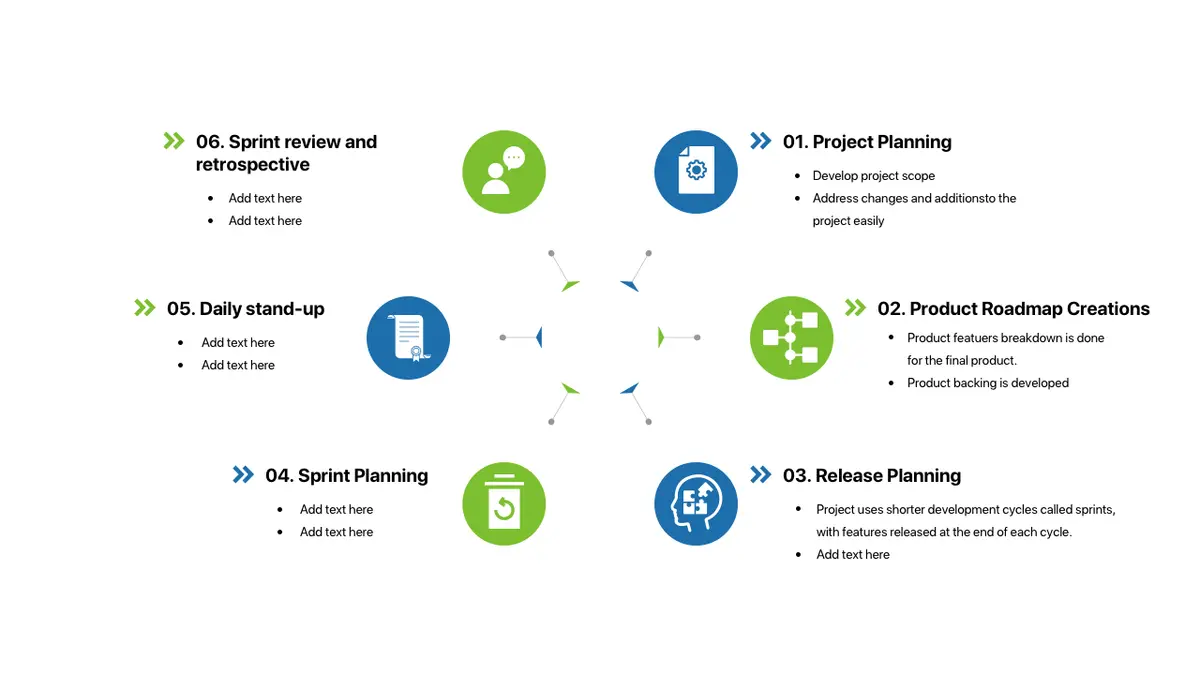
As per the Agile Manifesto, the app development framework values individuals & interactions, working software, client association, and responding to change instead of following a plan.
Now, even though there are different frameworks for implementing agile, such as Scrum and Kanban, they all share some common steps.
It involves defining the vision, scope, and goals of the project, as well as identifying the stakeholders and their needs.
This is a high-level overview of the features and functionalities that the product will deliver over time, aligned with the strategic objectives of the project.
A detailed plan of how and when the product will be delivered to the customers, based on the prioritization and estimation of the work items.
This is a short period of time (usually one to four weeks) in which a specific set of work items are completed and tested by the team.
These are brief meetings (usually 15 minutes or less) where the team members share their progress, challenges, and plans for the day.
These are meetings at the end of each sprint where the team showcases the work done to the stakeholders and collects feedback, as well as reflects on what went well and what can be improved for the next sprint.
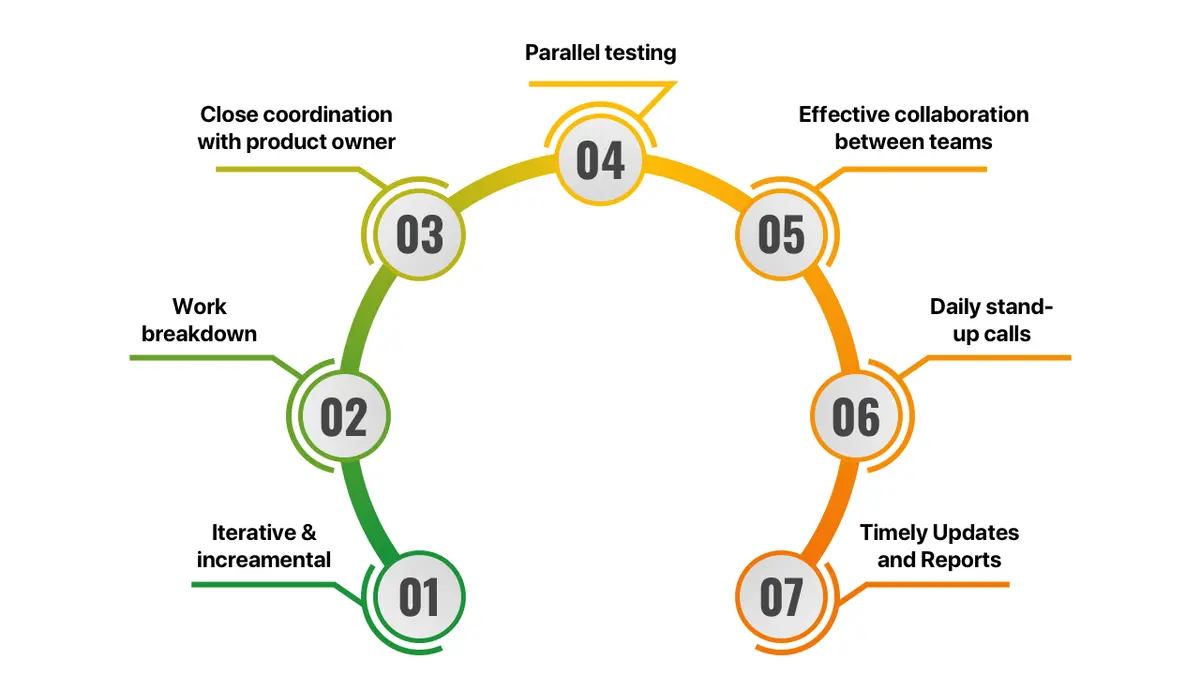
Agile methodologies are a set of approaches to agile software development, whether for an enterprise or SMEs, that emphasize collaboration, flexibility, and customer feedback. There are many different agile methodologies, but some of the most popular ones are:
A framework that organizes the work into short iterations called sprints, where a cross-functional team delivers a potentially shippable product increment.
A method that visualizes the work as cards on a board, and limits the amount of work in progress to optimize flow and reduce waste.
A discipline that focuses on delivering high-quality software through practices such as test-driven development, pair programming, continuous integration, and frequent releases.
A philosophy that applies the principles of lean manufacturing to software development, such as eliminating waste, delivering value, and empowering teams.
A family of methodologies that adapt to the size, complexity, and the criticality of the project, and emphasize communication, feedback, and people over processes and tools.
A model-driven approach that divides the project into features, and follows a five-step process: develop an overall model, build a feature list, plan-design-build by feature.
A framework that covers the entire project lifecycle, and uses principles such as focusing on business value, delivering on time and budget, and collaborating with stakeholders.
A methodology that replaces the traditional plan-design-build cycle with a speculate-collaborate-learn cycle, and embraces change as a natural and inevitable part of software development.
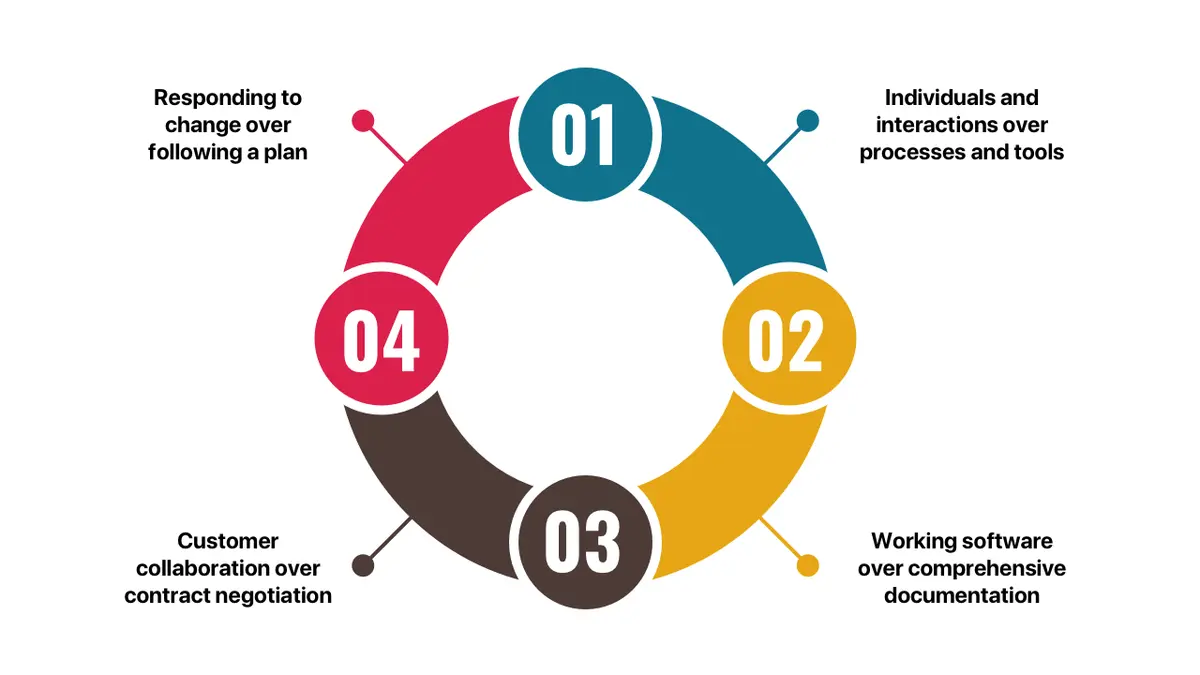
Agile core values signify that it prioritizes people, feedback, communication, and adaptation rigid methods, extensive documentation, fixed contracts, and predefined plans. Similarly, agile teams aim to deliver value to customers frequently and respond to their changing needs and expectations.
Agile development methodology prioritizes the value of people and effective communication within a project. It emphasizes the importance of collaboration, teamwork, and open communication among team members and stakeholders.
In addition, agile teams work together closely, often co-located, and use face-to-face conversations as the best way to convey information.
While documentation is still important, Agile values practical results and functionality over extensive and detailed documentation that meets the customer’s needs more than detailed documentation.
Agile teams deliver software frequently, in small increments, and focus on the technical quality and feedback from the users.
Agile encourages close collaboration with customers or stakeholders throughout the development process. The best part is even late in the development process, it accepts changing requirements and produces products that meet the customer’s changing expectations.
This means that agile teams value active involvement and cooperation with the customers more than sticking to the initial requirements.
Agile recognizes that change is inevitable in a project. It encourages teams to be flexible, adaptive, and responsive to changes in requirements, technology, and market conditions.
Agile development methodologies emphasize the ability to quickly adjust plans and strategies based on new insights and feedback. Instead of rigidly adhering to a fixed plan, Agile embraces change as an opportunity to improve the product and respond to changing market conditions.
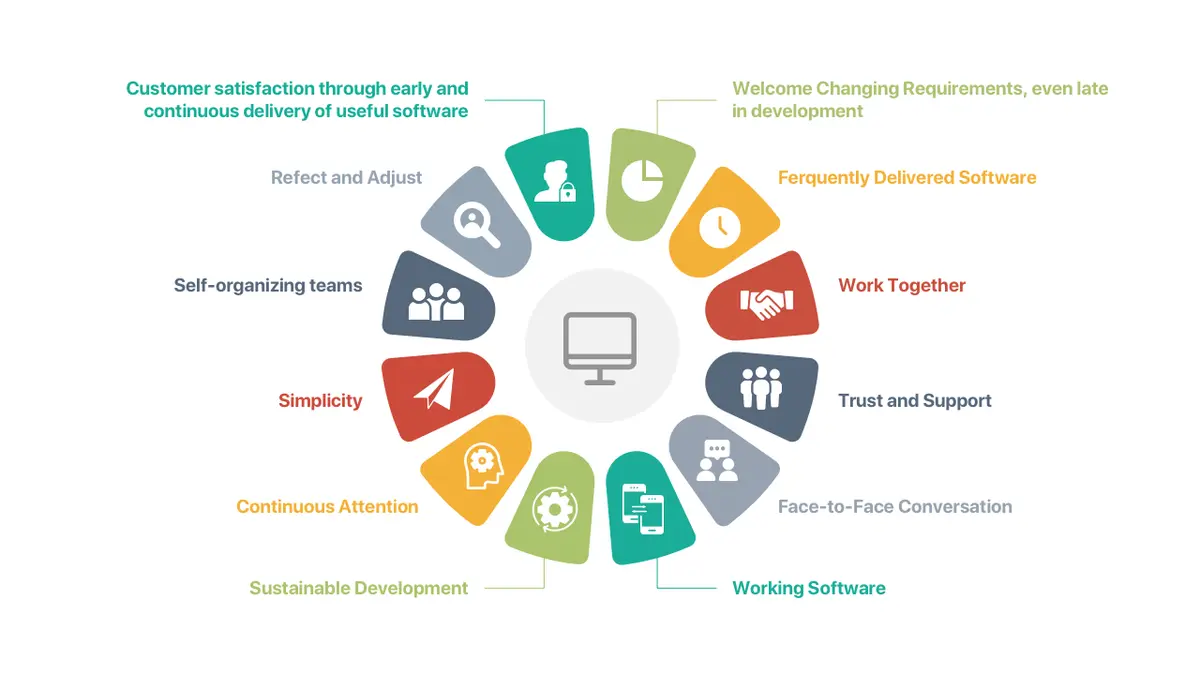
The 12 Agile principles are a set of guidelines that aim to help teams deliver software that is valuable, adaptable, and customer-focused. They are based on the Agile Manifesto, which was created in 2001 by a group of 17 software developers who wanted to find a better way to work.
Here’s how the Agile principles go!
The agile project management framework is primarily comprised of five key elements.
These are the smallest unit of work in an Agile project. They describe what the user wants, why they want it, and how it will benefit them.
These are one-to-four-week cycles during which Agile teams work on the user stories in the current sprint, review the work done at the end, and plan the next one right afterward.
These are meetings that help Agile teams coordinate, communicate, and improve their work. Some of the common meetings are stand-ups, sprint planning, sprint review, and sprint retrospective.
This is a visual tool that helps Agile teams track their progress and workflow. It usually consists of columns that represent different stages of work, such as to-do, in-progress, and done.
This is a list of all the user stories that need to be done for the project. The product backlog is prioritized by the product owner, who represents the customer’s needs and expectations.
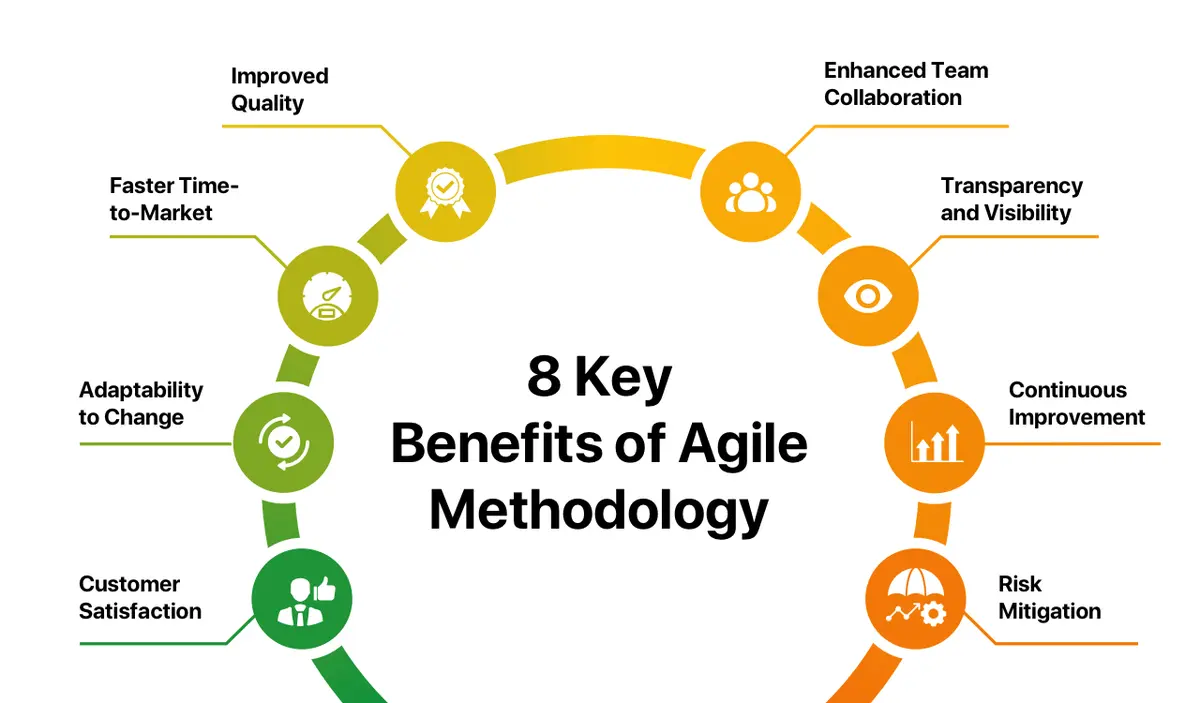
Agile methodologies prioritize customer collaboration and involvement throughout the development process. By regularly delivering working software and incorporating customer feedback, Agile ensures that the end product meets customer expectations and provides value. This leads to higher customer satisfaction and a higher likelihood of delivering a successful product.
It embraces change and allows for flexibility in project requirements. In addition, it recognizes that requirements can evolve over time and encourages teams to respond and adapt to changes quickly.
This adaptability enables teams to stay responsive to market dynamics, emerging technologies, and shifting customer needs, resulting in a product that is better aligned with current expectations.
Agile promotes iterative development and frequent delivery of working software. By breaking the project into manageable iterations (sprints), teams can prioritize and deliver valuable features earlier, reducing time-to-market.
This allows businesses to gain a competitive edge by getting their product or updates to market faster.
The project development framework emphasizes continuous integration, testing, and feedback loops.
By implementing continuous testing practices and incorporating regular feedback from customers and stakeholders, Agile helps identify and address issues early in the development process. This focus on quality results in a higher-quality end product and reduces the risk of costly defects or rework.
Agile encourages close collaboration among team members, stakeholders, and customers. Cross-functional teams work together, share knowledge, and collaborate on decision-making, leading to better outcomes.
Moreover, collaboration fosters a sense of ownership and shared responsibility, enhances communication, and promotes a positive working environment.
Agile methodology promotes transparency and visibility into the project’s progress. Regular meetings, such as daily stand-ups and sprint reviews, provide opportunities to discuss progress, share updates, and identify any obstacles.
This transparency allows stakeholders to have a clear understanding of the project’s status and promotes trust and accountability within the team.
The project management framework embraces a culture of continuous improvement. Through practices such as sprint retrospectives, teams regularly reflect on their processes, identify areas for improvement, and implement changes.
This iterative learning and improvement mindset helps teams enhance their productivity, efficiency, and effectiveness over time.
It promotes early and frequent feedback from customers and stakeholders. This feedback allows teams to identify and address issues, risks, and potential bottlenecks early in the development process. By continuously monitoring and mitigating risks, Agile helps minimize project risks and increases the chances of project success.
The agile methodology serves as a dynamic and effective framework for managing projects, software development, and mobile app solutions.
With its step-by-step approach, Agile empowers teams to deliver value early, adapt to changing requirements, and foster continuous improvement. By prioritizing customer collaboration, embracing change, and promoting cross-functional teamwork, Agile enables organizations to achieve higher customer satisfaction, faster time-to-market, and improved product quality.
The iterative nature of Agile allows for quick feedback cycles, ensuring that the end result meets customer expectations.
In an ever-evolving business landscape, Agile methodology stands as a reliable guide, empowering teams to navigate complexity, drive innovation, and deliver successful projects.
